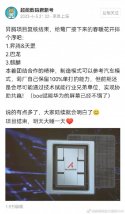That for equipment that's already developed and mass produced, and thus for companies that are already established. I'm talking about new companies and startups being founded. You know, a group of guys starting up a brand new business to make lithography systems and whatnot. Because I'm seeing dozens of brand new chip design companies but not a lot of new equipment/materials companies and not a single new company that's focused on lithography systems.The money for equipment is being allocated to the fabs so the fabs ultimately make the decisions about which equipment providers and types of equipment get funding. basically indirectly money given to equipment makers. last year Chinese tools makers won record bid in mainland.
It's also pretty clear that it's way way overschedule and probably overbudget. They were supposed to have it done and in mass production by 2021 or 2022. Even then, we have no idea how long it's gonna take to actually to reach mass production, enough to supply China's domestic needs. This is at a critical time in the industry, where sanctions are being dropped left and right and ASML can't 100 guarantee supply.you should stop behave like a child. how many times our experts cleared your doubt.
SMEE have successfully developed 28nm DUVi .. currently under validating process. if everything goes well then small scale production can start at the end of this year.
This isn't some random company, it's probably the most important crucial part of the entire semiconductor supply that China has the least control over. We don't have details, but they're probably swimming in money and resources, they are more or less the only ones working on DUV right now. When things are this high stakes and important, and you have the money and resources, you don't get to excuse incompetence. Can you imagine if the development of the nuclear bomb took twice as long as it did? It's not like any of their previous projects inspire confidence in the company.

